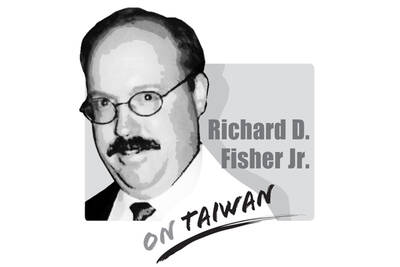Sana Hashmi’s article on Wednesday (“Pew wrong about Indians’ views,” Aug. 16, page 8) includes several inaccurate statements about our approach to surveying Indian public opinion. These statements hinge on a fundamental misunderstanding of Pew Research Center’s sampling design in India.
Hashmi erroneously implies that the center only surveyed respondents from four prominent Indian cities for our recent analysis of attitudes toward Taiwan. This is not correct. Respondents from Ahmedabad, Bengaluru, Kolkata and Mumbai comprise fewer than 5 percent of our sample — about the same proportion as in the Indian population overall. Because the survey is intended to be representative of the nation as a whole, the remainder of the sample comes from places outside these four cities.
Our poll in India, conducted from March 25 to May 11, involved surveying 2,611 Indians face-to-face in 11 languages across 263 villages and towns, in urban and rural areas. Moreover, counter to Hashmi’s claim that we omitted key regions, about 3 percent of our sample reside in northeastern India, in proportion to available census figures.
The survey covered nearly 97 percent of the entire country and was based on a scientific, random sample. (A total of 3 percent of the Indian population lives in districts or states that had to be excluded from the survey due to inaccessibility or insecurity.) This poll is part of a broader 24-country study where each survey is designed and executed to represent the general population. Pew Research Center does not field urban-only surveys in any of these countries.
Hashmi suggests that the results could be skewed because respondents were confused about whether they were being asked for their opinion of the People’s Republic of China or the Republic of China. Notably, Pew Research Center unambiguously asked respondents about “China” and “Taiwan” in English and 10 other languages in which the survey was conducted (eg, Hindi and Punjabi), which was reviewed by an independent firm that employs local linguists in each language to ensure understanding by Indian participants. While it is always possible for respondents to misunderstand a survey question, efforts were made to reduce the likelihood of such an error.
Indeed, one assertion in Hashmi’s article — “many Indians ... might lack familiarity with Taiwan” — is actually backed by Pew Research Center results. In the survey, when asked about their opinion of Taiwan, the share of Indians who said they did not know or otherwise refused to answer the question was twice as high as when asked the same about China (20 percent vs 8 percent). These “don’t know” rates, paired with the notion that Indians’ unfavorable views of China and Taiwan differed significantly (67 percent unfavorable toward China vs 43 percent unfavorable toward Taiwan), suggest that while there may be some difference in familiarity, Indian respondents still view these places in distinct ways. As such, we feel confident these favorable and unfavorable measures reflect actual sentiment toward Taiwan.
As an organization that conducts polling across the globe, Pew Research Center consistently works with local organizations, vendors and subject matter experts to ensure we responsibly study a range of topics. We stand by our findings on Indians’ views of Taiwan, and in the context of interpreting a Pew Research Center survey, we welcome the public to reach out to info@pewresearch.org for clarification about our approach.
Laura Silver is Pew Research Center’s associate director of global attitudes research; Patrick Moynihan is the center’s associate director of international research methods.
We are used to hearing that whenever something happens, it means Taiwan is about to fall to China. Chinese President Xi Jinping (習近平) cannot change the color of his socks without China experts claiming it means an invasion is imminent. So, it is no surprise that what happened in Venezuela over the weekend triggered the knee-jerk reaction of saying that Taiwan is next. That is not an opinion on whether US President Donald Trump was right to remove Venezuelan President Nicolas Maduro the way he did or if it is good for Venezuela and the world. There are other, more qualified
China’s recent aggressive military posture around Taiwan simply reflects the truth that China is a millennium behind, as Kobe City Councilor Norihiro Uehata has commented. While democratic countries work for peace, prosperity and progress, authoritarian countries such as Russia and China only care about territorial expansion, superpower status and world dominance, while their people suffer. Two millennia ago, the ancient Chinese philosopher Mencius (孟子) would have advised Chinese President Xi Jinping (習近平) that “people are the most important, state is lesser, and the ruler is the least important.” In fact, the reverse order is causing the great depression in China right now,

This should be the year in which the democracies, especially those in East Asia, lose their fear of the Chinese Communist Party’s (CCP) “one China principle” plus its nuclear “Cognitive Warfare” coercion strategies, all designed to achieve hegemony without fighting. For 2025, stoking regional and global fear was a major goal for the CCP and its People’s Liberation Army (PLA), following on Mao Zedong’s (毛澤東) Little Red Book admonition, “We must be ruthless to our enemies; we must overpower and annihilate them.” But on Dec. 17, 2025, the Trump Administration demonstrated direct defiance of CCP terror with its record US$11.1 billion arms
As technological change sweeps across the world, the focus of education has undergone an inevitable shift toward artificial intelligence (AI) and digital learning. However, the HundrED Global Collection 2026 report has a message that Taiwanese society and education policymakers would do well to reflect on. In the age of AI, the scarcest resource in education is not advanced computing power, but people; and the most urgent global educational crisis is not technological backwardness, but teacher well-being and retention. Covering 52 countries, the report from HundrED, a Finnish nonprofit that reviews and compiles innovative solutions in education from around the world, highlights a